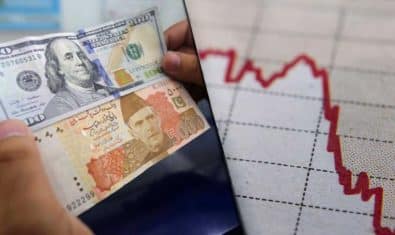Pakistan recently became the 5th largest exporter of Sesame seeds in the world, with the commodity’s exports clocking in at $351 million during the first five months of FY24.
Sesame is one of the important oilseed crops in Pakistan and is grown in both irrigated as well as rain-fed areas. Originating from the ancient regions of Africa, it is a versatile and culturally significant crop that has played a pivotal role in various cuisines worldwide.
However, its importance is particularly pronounced in China which is the largest buyer of the commodity from Pakistan, where sesame has deep historical roots dating back thousands of years. Initially introduced via the Silk Road, sesame quickly found its way into Chinese cuisine, becoming an integral component of traditional dishes.
The tiny seeds are not only valued for their rich nutty flavor but also their nutritional content, boasting high levels of protein, healthy fats, and essential minerals.
It is famous for its high-quality oil and high content of protein (22 percent). Its oil content ranges from 50-58 percent. The iodine number of Sesame oil varies from 100-120 which shows its better oil quality and shelf life.
Moreover, sesame’s adaptability makes it a resilient crop in various climates, further contributing to its widespread cultivation and consumption in China. Its oil, known for its stability and long shelf life, has become a staple in Chinese kitchens, enhancing the flavors of countless dishes.
Sesame is grown in 65 districts of the country as rain-fed as well as irrigated crop. There is great scope for this crop due to its export potential to China, India, Japan, Korea, Kazakhstan, Malaysia, and Egypt.
In 2020, the government also promoted Sesame cultivation in the province and announced a subsidy of Rs. 2,000 per acre which motivated the farmers to grow sesame on a large scale. Sesame was also an important part of the recent five-year National Oilseed Enhancement Programme (2019-24) which resulted in a 275 percent rise in cultivated area and a 381 percent increase in crop production.
Interestingly and for once-in-a-lifetime moments, the government also worked on developing the export channels for a commodity building liaison with China.

Sesame has also continued to fetch high prices for farmers this year with a slight decline reported only in the last few weeks due to year-end payment pressure, which is expected to improve in January. But in addition to government support and liaison with China, there are some more reasons.
For starters, Sesame seeds are being exported instead of being used in processing for edible oil which eliminates the need to develop an industry of sorts for its growth. Simply put, it’s being grown and traded as other grain crops, unlike Oilseeds where the Oil extraction industry is a key driver of growth.
Secondly, Sesame is supplementing Moong, the most cultivated pulse in the country. Moong production has increased substantially during the last decade, but farmers are gradually abandoning the crop after suffering heavy losses due to changing rainfall patterns.
“Sesame has proven a perfect alternative for Moong with far less production cost and higher profit at a time when farmers were suffering losses in Moong due to extreme weather,” stated a market consultant while talking to ProPakistani
He added that Sesame demand is strong across China and the European Union, and its cultivation and exports are expected to continue to rise in the foreseeable future with cultivation predicted to cross 700,000 acres in the coming year


Source: Agriculture Statistics of Pakistan
Moong cultivation across the country has declined by 34 percent during the last two years from 301,660 acres during 2021-22 to 198,000 acres during 2022-23 while production also declined by 45 percent from 263,780 tons to 143,650 tons during the same time.
Given Pakistan is a net importer of pulses, it is unclear how a substantial loss in Moong output and the resulting need for more imports would relate to export earnings from Sesame seeds.
But that’s understandable that certain growth in one crop often comes from the decline of another. Sugarcane took over Cotton in South Punjab only when Cotton was neglected, the textile industry was in tatters and it was becoming too difficult for farmers to grow.
One more concern is the fact that due to variations in rainfall patterns, the Sesame yield is not stabilized and the farmers sometimes cannot get sustained income.
Regardless, the massive rise in exports is a success, and government liaison with Chinese authorities and financial support in terms of subsidies through the National Oilseed Enhancement Programme proved a final catalyst for the growth.






















So this is why sesame seeds are locally available for Rs. 1500/- per kg.
By the way, the sesame seeds available in the market at various shops and stores are of an extremely poor quality. To clean one kg of sesame seeds and remove impurities (which are in abundance), one needs several days. I hope such poor stuff is not being exported.
Perhaps the government’s policy is to export the better quality stuff, whether sesame seeds, kinnows or similar other items and leave the trash for the local population. After all foreign exchange is the priority. People hardly count here.
The data shared by writer is good but it neglected the most important issue in sesame growing. We need shatter resistant seed of sesame and canola.. about 60 percent seed is lost in the field during harvesting process…